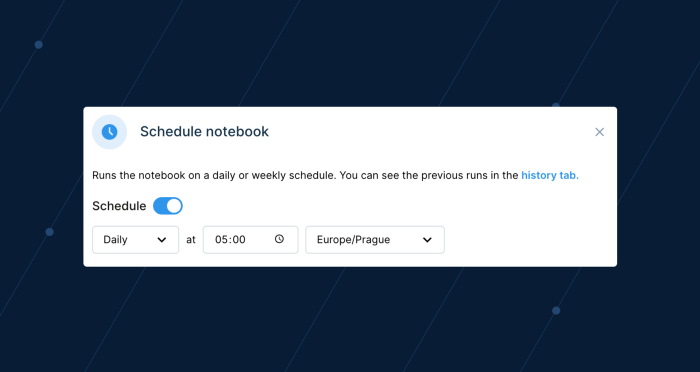TLDR: You can now bring analytics into Notion using Deepnote embeds. You can also read this article as a Notion page (naturally) to experience all the bells and whistles.
At Deepnote, our team loves and lives in Notion. From keeping track of our user interviews and managing our hiring pipeline to shaping new features — Notion allows us to stay in sync.
As a hybrid team distributed across North America and Europe, we have a strong writing culture and everything that is said gets captured in Notion. One thing that was missing was an analytical layer — something that would allow us to complement our stories and ideas with numbers and data visualizations. Being the data nerds we are, we jumped on the opportunity to bring some of Deepnote’s analytical power right into Notion’s interface.
In case you’re new to Deepnote: Hi, we’re building a collaborative data notebook. In this article, I'll show you four ways in which we use the new Notion & Deepnote embed experience on our team, and hopefully inspire you to layer in more analytics into your day-to-day, too.
1. Query your data warehouse & embed it in meeting notes
You can use Deepnote to embed DataFrames, code snippets, and even interactive graphs into your Notion pages. Bringing Deepnote blocks into Notion allows our team to lay down the narrative in native Notion blocks and complete the story with numbers. This way, we get to keep the context all in one place.
You can see it in action in this quick demo video:
👉 Example use: The Plotly graph below captures current vaccination data in Norway. This block is live and powered by a scheduled Deepnote notebook. This means the data is automatically updated from official government sources every day.
2. Go full circle — query Notion databases using Deepnote
Another powerful addition to your toolbox is the ability to tap into Notion databases you build and analyze them in notebooks. Using the Notion API and Deepnote notebooks, our team easily reads Notion databases and converts them to DataFrames, which are easy to visualize. This makes data and metrics first-class citizens in Notion!
Here are some more possibilities this unlocks:
- See how candidates progress in your hiring pipeline. How long does it take you to go from first contact to signing a contract?
- Analyze your engineering tickets. How are they distributed among your engineers? How about not just counting them, but looking at their difficulties?
- Make sure your sales pipeline is healty. Can you hit your targets? Which reps are bringing in the most revenue?
👉 Example use: Here is a Notion document with a database storing sales data. It shows how we analyze this data with Deepnote and embed results back into Notion using live blocks.
3. Keep things up to date
Combining text with data visualizations is great, but the Notion API introduced earlier this year allowed us to layer in more magic. On one hand, you can fetch data from Notion into a Deepnote notebook and analyze it (collaboratively, in your browser, with zero setup — all that good stuff). On the other hand, this also means that the Deepnote blocks you embed into Notion are live and connected to the underlying notebook — any changes in the notebook are reflected in Notion, too!
How does this work? With the scheduling functionality of Deepnote notebooks, you can schedule your notebook to run and refresh the underlying data at specific intervals and at certain times. The analyses and data visuals (including your embeds) get refreshed together with your notebook. This way, you can be sure that the embedded blocks in your Notion pages are always up to date and reflect the latest data.

👉 Example use: Here is an example COVID-19 vaccination report built using Deepnote blocks and Notion. The notebook is scheduled to run every day, so you'll always have access to fresh data right within Notion.
4. Make your reports interactive
Last but not least, Deepnote embeds are interactive, so bringing your charts into Notion becomes a really effective way to tell data-driven stories that your audience can engage with. This is especially powerful for reports with rich data visualizations. The audience consuming your Notion pages can click, zoom, select, and hover over your data visualizations (depending on the block type).
At Deepnote, we often use this functionality for investor reporting, as it's especially great for those not comfortable dealing with code. Using Notion with embedded, interactive Deepnote blocks focuses the readers on what’s important.
We are just beginning our journey of building a platform that brings teams together to explore, collaborate on, and share data from start to finish. If you want to get your hands on Deepnote and try the new embedding experience with Deepnote and Notion, you can sign up for free here.